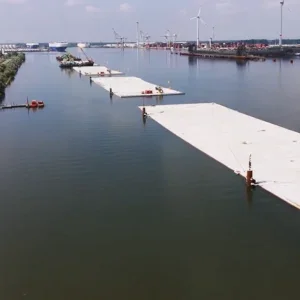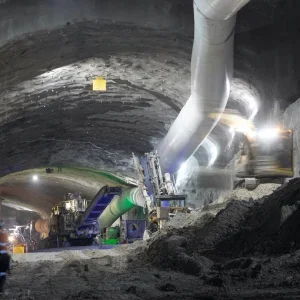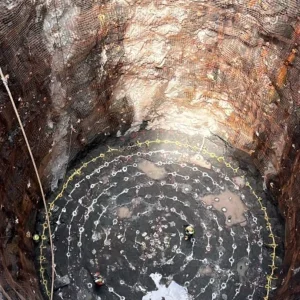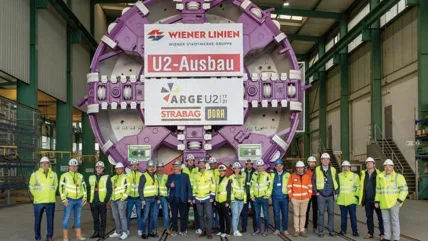
Vienna’s public transport operator, Wiener Linien, has two major projects underway involving underground infrastructure: extension of metro Line U2; and, the final phase of the modernisation of the U4 line (under the ‘NEU4’ project). The tunnels, along with other new surface projects, are to help close gaps in the transport network.
Development of the Austrian capital’s metro network began in 1969 with work getting underway on the first sections of three lines (U1, U2 and U4). The first part was opened in 1978 and the network has been expanded since. The lines operate semi-automatically and the city is introducing its first full automated services.
The latest investment in the underground metro expansion as well as surface tram line projects are designed to meet Vienna’s transport needs to align with economic requirements and growth of the population, which is expected to reach more than two million people by 20230. According to the city, the investment will create and secure tens of thousands of jobs.
LINES U2XU5
At present, the southern end of U2 is everything southwest of the city centre and Rathaus station (the City Hall area) out to the terminus at Karlsplatz station. Rathaus is the focus of the changes.
The city’s transport strategy is to reassign that section of U2 to become the first part of the new Line U5. Then, in future, it will run to the other side of Rathaus and beyond, out to the northwest and Elterleinplatz station. That strategy does not cleave Line U2 chopped off at Rathaus. Instead, it is being extended – in a different direction. A new southern section is under construction from Rathaus to Matzleinsdorfer Platz. These are the main tunnelling works presently underway on the Vienna metro network.
In future, the new U2 southern section will be extended farther, to Wienerberg.
Rathaus, therefore, in future will be an interchange station for lines U2 and U5.
Line U5 will be Vienna’s first fully automated line.
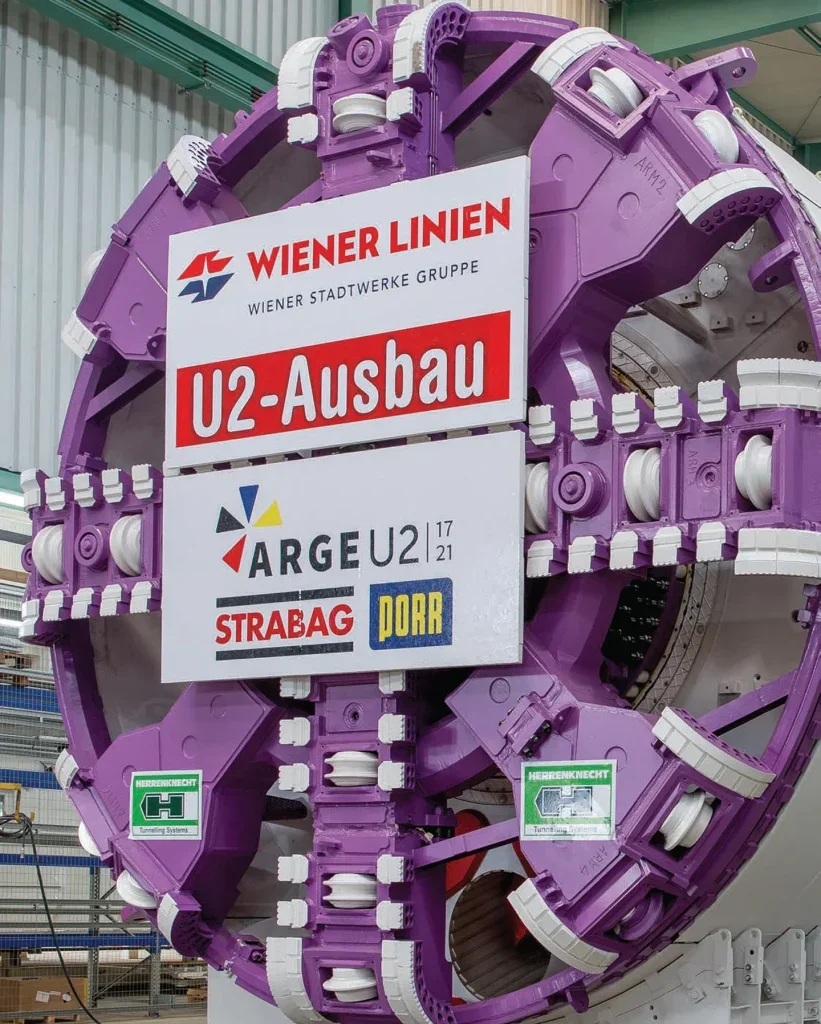
Line U2
Tunneling is focused on extending Line U2 and two different methods are being employed – New Austrian Tunnelling Method (NATM) and TBM boring, respectively. NATM works were used for part of construction of Matzleinsdorfer Platz station, at the south end of the new extension. Works started in Q2-2022 after ground improvement using artificial ground freezing (AGF).
With construction now advanced enough at Matzleinsdorfer Platz station, the location is ready for the station structure to be the launch site TBM bores, driving north, and the supporting spoil removal logistics.
From Matzleinsdorfer Platz north to Augustinplatz, near Rathaus, the preliminary site investigations showed the stretch to have predominantly clayey geology. The tunnelling method chosen for this section is earth pressure balance (EPB) excavation. The JV contractor will use a single TBM to bore twin tunnels from Matzleinsdorfer Platz station to Augustinplatz. The northbound route passes three intermediate stations on the way, which proceeding northward are Reinprechtsdorfer, Pilgramgasse and Neubaugasse.
The 6.84m-diameter EPBM will bore the first 2.1kmlong tunnel before being pulled back to Matzleinsdorfer Platz station and repositioned for the second, parallel drive. While Pilgramgasse station is the lowest on the vertical alignment, Neubaugasse is the deepest underground from the ground surface).
The Herrenknecht machine is 120m long, weighs 1,200 tonnes, and its cutterhead drive power of 1,920kW and maximum torque is 15,028kNm, respectively. The TBM had its Factory Acceptance Test (FAT) in late January. It is being prepared for first launch in Q3.
Spoil removal from the tunnelling work is to be via the Matzleinsdorfer Platz launch shaft. This approach to muck transport will save 20,000 truck trips through the city and 75 tonnes of CO2, says the JV.
The 50:50 JV contractor (ARGE U2 17-21) was awarded the contract at the end of 2020. Construction began early 2021 for completion by mid-2028.
In the procurement nomenclature, the U2 17-21 works break down as follows:
U2/17 – tunnel in twin tubes, driven by TBM
U2/18 – Matzleinsdorfer Platz station construction
U2/19 – Reinprechtsdorfer Strasse station construction
U2/20 – Pilgramgasse station construction
U2/21 – Neubaugasse station construction
The works also include three emergency exits with ventilation shafts, various shell strengthening works, and track construction.
Equipment transport and construction logistics are key challenges for the works in the dense urban environment. The surface logistics around Neubaugasse station (also the deepest) are especially challenging.



